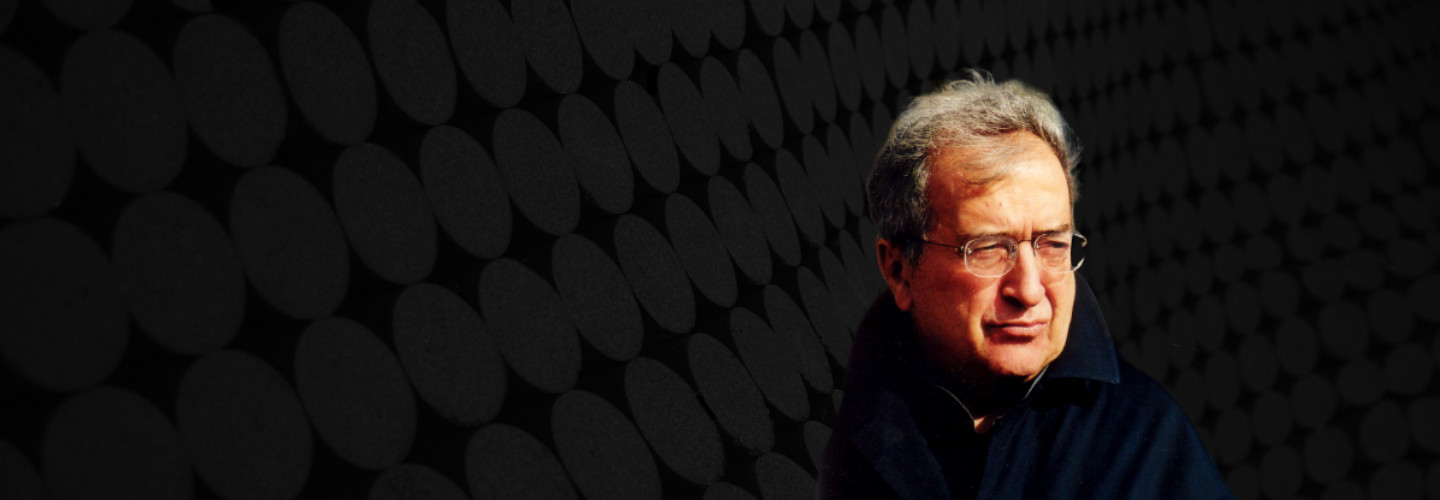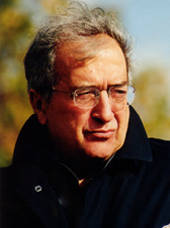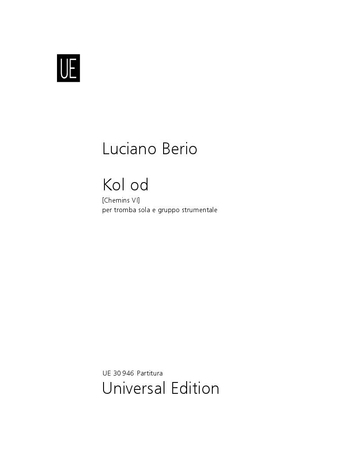

Luciano Berio
Kol od
Short instrumentation: 3 1 4 1 - 2 2 1 1 - cel, acc, sop.sax, alto sax, vln(4), vla(3), vc(3), cb(2)
Duration: 20'
Dedication: per Paul Sacher con profondo affetto e ammirazione, per il suo novantesimo compleanno
Solos:
trumpet
Instrumentation details:
piccolo
1st flute
2nd flute
oboe
clarinet in Eb
1st clarinet in Bb
2nd clarinet in Bb
bass clarinet in Bb
soprano saxophone in Bb
alto saxophone in Eb
bassoon
1st horn in F
2nd horn in F
1st trumpet in C
2nd trumpet in C
trombone
bass tuba
celesta
accordion
1st violin
2nd violin
3rd violin
4th violin
1st viola
2nd viola
3rd viola
1st violoncello
2nd violoncello
3rd violoncello
1st contrabass
2nd contrabass
Berio - Kol od for trumpet and chamber orchestra
Translation, reprints and more

Luciano Berio
Berio: Kol od for trumpet and chamber orchestraOrchestration: for trumpet and chamber orchestra
Type: Studienpartitur
Sample pages
Audio preview
Work introduction
The intentional utilisation of musical material previously employed is a practice common to both Boulez and Berio. It appears to be no coincidence that both composers can be seen to have an affinity with the elaboration of concepts of James Joyce’s novels. In the case of the Italian composer, however, these concepts are realised in quite a different manner. With Berio, there is less of a „vanguard action“ (Flucht nach vorn) and rather more of a classic approach to transcription which is nevertheless deflected through the contemporary lens.
The series of works with the titel Chemins is a re-writing of the Sequenzas for solo instruments within the context of a concerto. Chemins I was derived from Sequenza II for harp, and Chemins II was based on Sequenza VI for viola. Berio has said about this form of transcription: „I am interested in transcription from the moment it defies strict definition, when it exceeds a restoration of the past - be that a personal one or the past of our cultural history. Transcription begins to interest me when it explores music as an ensemble of possibilities and not as an actual and concrete object. In short: when it is not a mere transcription but also a conscious invention. (...)
Transcriptions (as is perhaps the case with parody) can be found everywhere: in the oeuvre of Bach and Beethoven, who also happened to transcribe their own music; (...) of Ravel, Bartók, Webern; of Stravinsky who transcribed everything possible; (...) of Maderna who transcribed Gabrieli...
But there are some aspects of transcription which interest me less than the others: Let’s say the functional transcriptions of the Art of Fugue by Bach or the mouth-watering transcriptions of his Preludes and Fugues for organ. Those hold my interest far less than the sketch books by Beethoven, for example, in which he plays through several combinations and transcriptions of an idea. Or take, moreover, Stravinsky’s procedure in transcribing Les Noces, or of Boulez transcribing Polyphony X, Livre pour Quatuor or Poésie pour pouvoir and of Stockhausen transcribing Kontrapunkte or of Kagel transcribing musical stereotypes of the nineteenth century.“
It might become self-evident that Berio’s transcriptions of the Sequenzas into Chemins are not just orchestrations of an orchestral part as an accompaniment to a solo part. Rather they aim at a genuine re-invention of the whole, including of the solo part. It seems fitting to understand also KOL OD in this manner in its relation to the Sequenza X for trumpet.
